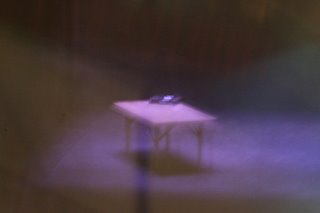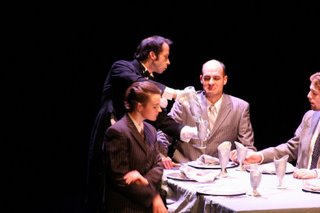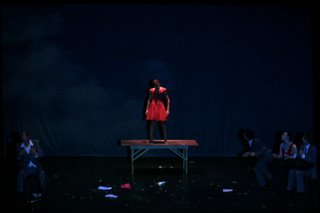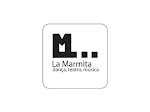NOTA:
Fizemos um erro no nosso mail nos últimos flyers. O endereço correcto é:
La-marmita@netcabo.pt
UM DIA DIFÍCIL, (dança-teatro)
Público organizado das escolas (estudantes do 3º Ciclo e Secundário). De Segundas a Sextas as 11h30 y 14h00
Público em geral, sessões às Sextas e Sábados pelas 16h00
Sátira coreográfica de Andrea Gabilondo que gira em torno do stress causado pelas situações limite da vida quotidiana.
08 e 22 de Março pelas 16h00
FORA DE HORAS Concertos de música contemporânea e popular com o grupo Bela Dupla, tangos, valsas e afins (dia 8). Concerto de música popular Brasileira (dia 22)
28 de Março, horário a definir
WORKSHOP DE DANÇAS HISTÓRICAS com Catarina Silva
De
WORKSHOP DE DANÇA-TEATRO com Andrea Gabilondo
12 e 26 de Abril
FORA DE HORAS Concertos de música contemporânea e popular com o grupo Bela Dupla
De
Acolhimento da Dois Pontos, Associação Cultural– Para grupos organizados e escolas
A VELHA AVARENTA– TEATRO/DANÇA– M DE 3 ANOS
Uma pequenina, deliciosa e quase desconhecida história da Sophia de Melo Bryner. Inspirado no texto A CEBOLA DA VELHA AVARENTA . Este espectáculo é um momento inesquecível onde o teatro, a dança, os objectos e a voz se unem para deleite dos mais pequeninos… Com muito humor e uma energia fora de série, uma velha muito velhinha mostra-nos como é bom partilhar.
HISTÓRIA DE MUITAS CORES– TEATRO/MULTIMÉDIA– M DE 4 ANOS
Um divertimento em torno das cores. Maria gosta muito de aventuras e numa dessas aventuras partiu uma perna… Mas como é uma criança cheia de imaginação e criatividade não ficou aborrecida, pegou numa caixa de lápis de cor e começou a fazer desenhos e a inventar histórias a partir desses desenhos.
MALDITA MATEMÁTICA– TEATRO– M DE 6 ANOS
Maldita matemática é uma viagem que passa pelo mundo dos números... Maria tem um teste de matemática... ...na véspera do teste, depois de muita brincadeira e pouco estudo, Maria deita-se, adormece e começa a sonhar... No sonho, Maria encontra-se num mundo povoado por números.
QUE POEMA DE ENTRE TODOS OS POEMAS? DESAFÍO POETICO– M DE 12 ANOS
Os espectadores que participam neste desafio poético, levam um pequena selecção de poemas que gostariam de ouvir e, como contrapartida, a actriz desfia-os a ler alguns poemas.

01 a 19 de Junho sessões durante à semana, pelas manhãs (estudantes do 1º Ciclo e Secundário)
FLORESTA – Coreografia e interpretação Ana D’ Andrea
Coreografia realizada pelo ARQUIPEL, sob encomenda do LA MARMITA. O espectáculo, com música especialmente composta, explora um registo minimalista e onírico e é inspirado na filosofia taoísta.
6 e 7 de Junho
ENSEMBLE LUSO- HELVÉTICO– Recital de Piano e fagote
Fagote: Susana Dias,; Clarinete/Clarinete baixo: Beatrix Graff; Piano Joaõ Queirós Estreias absolutas pelos compositores Hugo Ribeiro (Portugal) e Stephan Hodel (Suiça), obras de Miguel Azguime e Alexandre Delgado (Portugal) e Albert Moeschinger (Suiça). Projecto que combina essencialmente dois instrumentos e duas culturas diferentes
3, 4, 10 3 11 de Julho pelas 21h.30
FLORESTA- Coreografia e interpretação Ana D’ Andrea
Coreografia realizada pelo ARQUIPEL, sob encomenda do LA MARMITA. O espectáculo, com música especialmente composta, explora um registo minimalista e onírico e é inspirado na filosofia taoísta.
12 e 26 de Julho
FORA DE HORAS Concertos de música contemporânea e popular com o grupo de Tilike Coelho
17 a 19 de Agosto das 10h30 até as 14h30
WORKSHOP: MOVIMENTO CÉNICO PARA CRIANÇAS
De uma forma lúdica e com adereços simples, explora o universo do palco; é uma introdução as artes cénicas, uma maneira de construir a partir da imaginação, o corpo e a voz, pequenas historias e personagens.

05, 06, 12, 13, 19, 20, 26 e 27 de Setembro das 11h30 até às 18h
EMENTA DO DIA
Realização aos fins-de-semana.
Consiste numa série de sketches irónicos de teatro físico, realizadas por dois performers que ficam na entrada do espaço, com várias ementas, a convidar ao público que passa pela rua a degustar um prato artístico. Criação e direcção: Andrea Gabilondo
De
WORKSHOP DE DANÇA-TEATRO
Com Andrea Gabilondo
13 e 27 de Setembro
FORA DE HORAS Concertos de música contemporânea e popular com o grupo Bela Dupla
Durante todo o mês de Outubro
TERCERA CHAMADA- Criação e interpretação: Andrea Gabilondo,.
Para público em geral (sessões às sextas e sábados) e para público organizado das escolas (estudantes do 2º e 3º Ciclos) durante a semana. O espectáculo se desenvolve em torno da ideia de uma bailarina no seu camarim, à espera da Terceira Chamada do último espectáculo da sua vida. Dentro deste espaço de maquilhagem, vestuários e adereços se contextualiza a narrativa coreográfica, que toma como ponto de partida a biografia da personagem, para percorrer a história da dança ocidental, contada através da dança, gesto, texto e manipulação de objectos.
WORKSHOP DE DANÇA-TEATRO
Com Andrea Gabilondo
06 e 20 de Dezembro
FORA DE HORAS Concertos de música contemporânea e popular com o grupo Bela Dupla







eguro.jpg2.jpg)







































